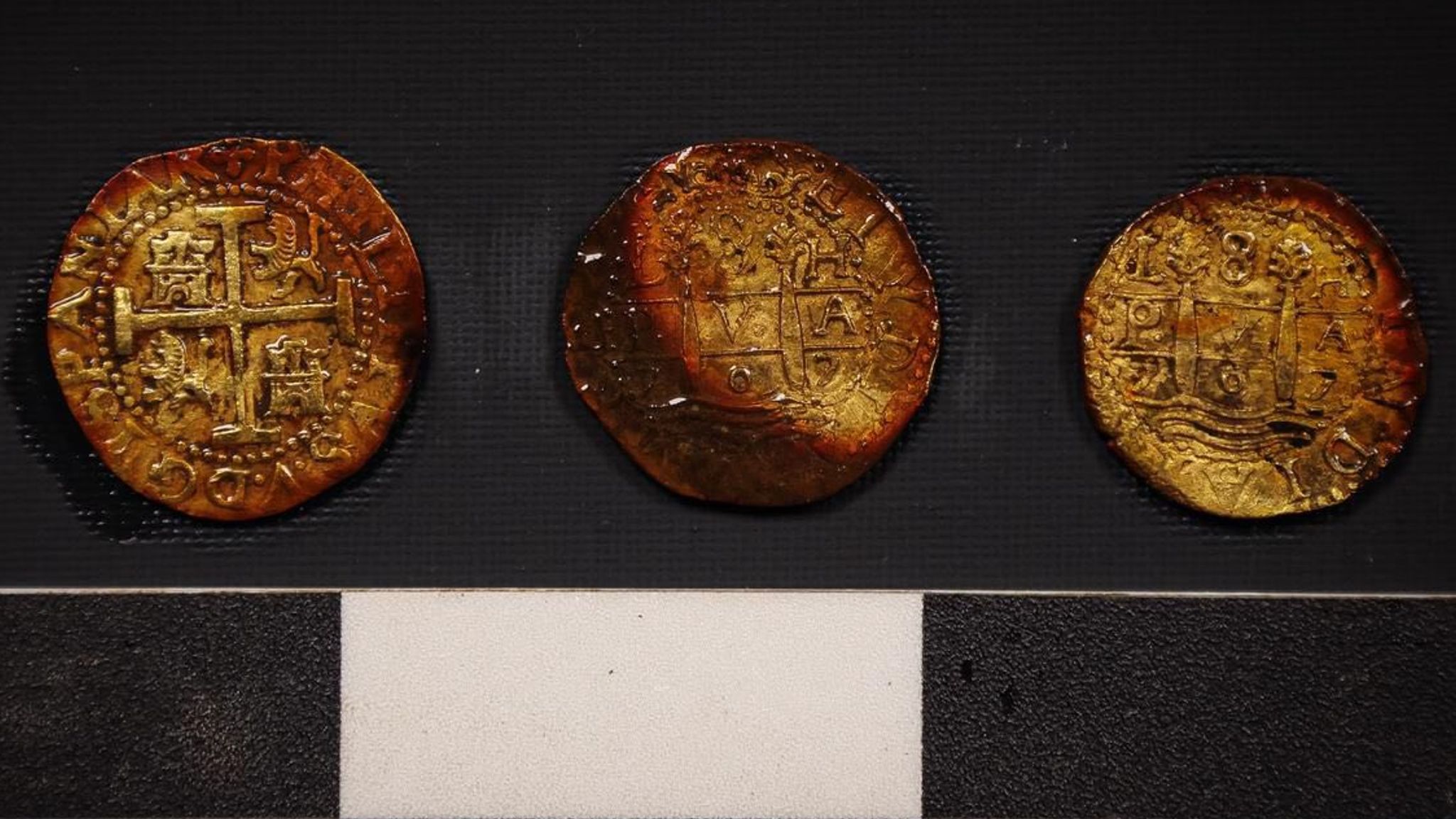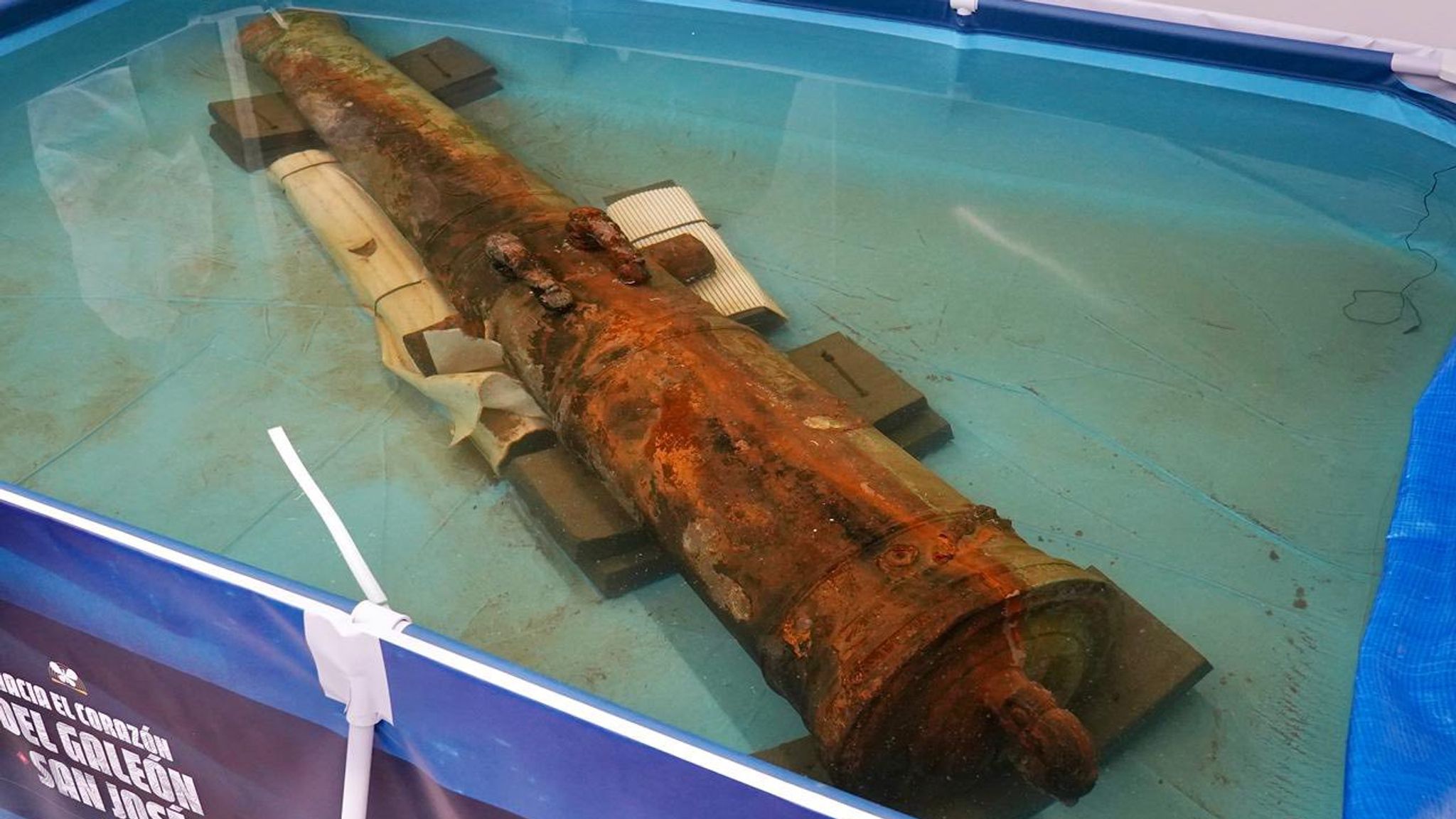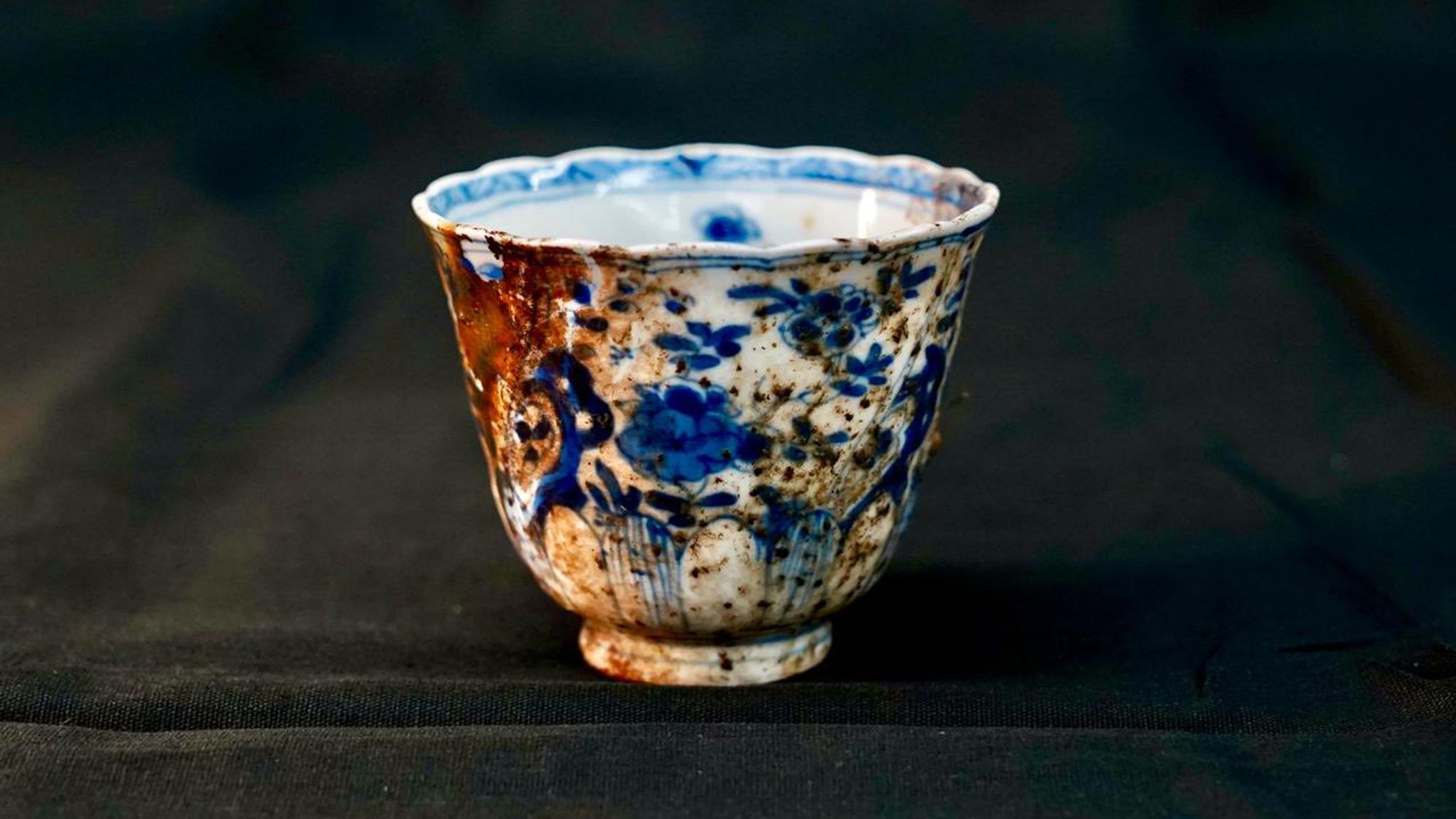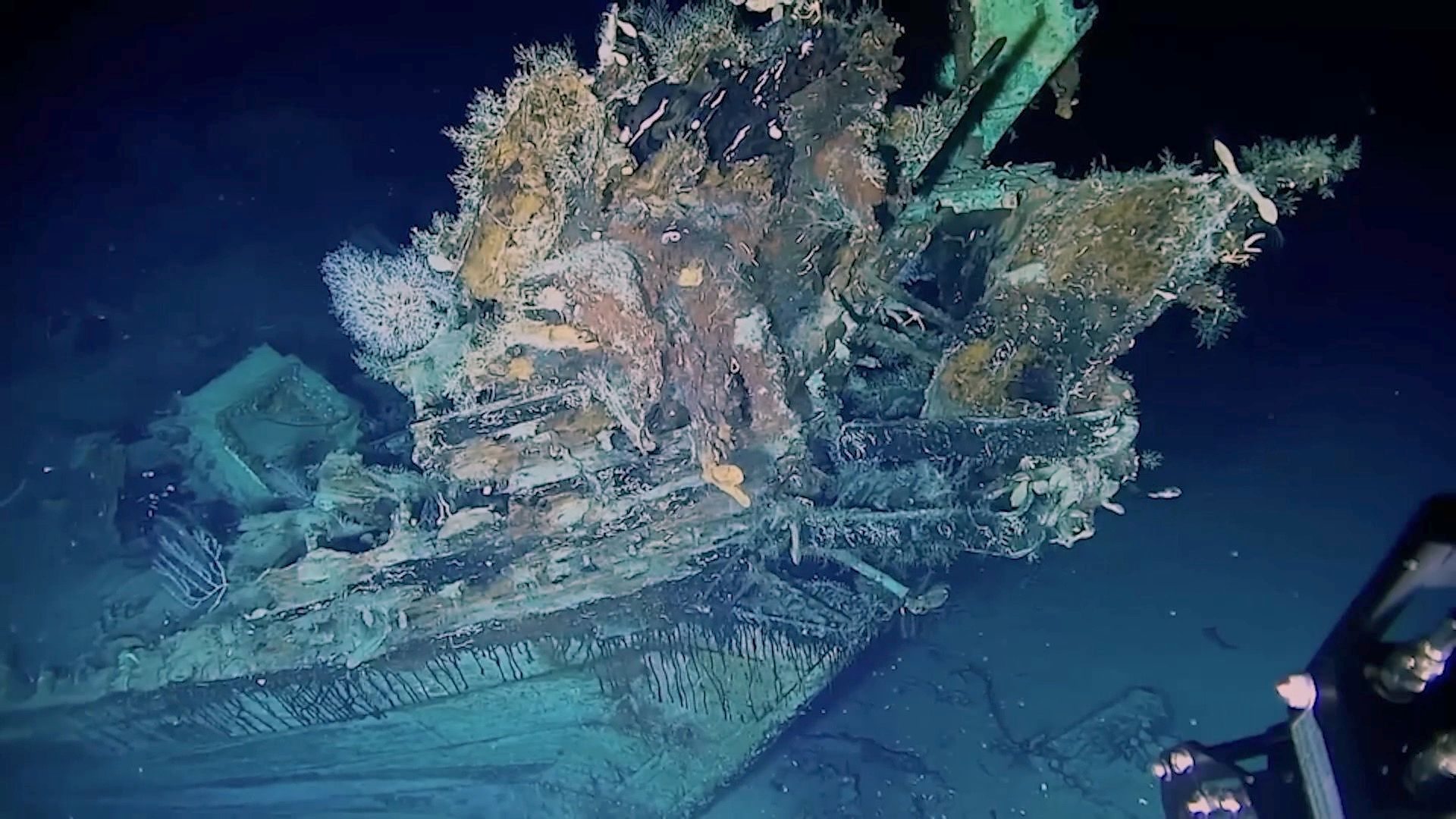After more than three centuries beneath the Caribbean waves, the legendary treasure of the Spanish galleon San José is finally surfacing. The financial stakes are astronomical. Colombian authorities revealed the first recovered items this week from what experts call the holy grail of shipwrecks. These include three gold and bronze coins, a cannon, and a porcelain cup.
The San José sank in 1708 after a fierce attack by a British fleet. It carried gold, silver, emeralds, and other precious goods plundered from Panama back to Spain. Experts believe the full cargo could be worth tens of billions of dollars today. This makes it the most valuable shipwreck in history.

Three gold coins lifted from the San José wreck offer the first tangible proof of the treasure believed to be worth billions still hidden below.
Why This Treasure Could Be a Financial Game-Changer
The recently recovered coins and artifacts serve as powerful symbols of what's to come. Yet the real fortune remains deep underwater at 600 meters below the surface. Economists and treasure specialists estimate the San José's cargo at $20 billion to $30 billion if fully recovered. That figure could surpass the annual GDP of many small nations around the world.
This isn't mere history unfolding. It's a massive shift in wealth that could alter financial landscapes for generations. Beyond the gleaming gold bars and silver ingots, the ship held emeralds mined by indigenous hands in South America. It also transported fine Chinese porcelain and luxury items from the 18th century. These pieces could command top prices at international auctions or in elite private collections.
Every artifact pulled from the depths will undergo meticulous conservation to preserve its story. But the sheer scale of the unrecovered haul stirs a sense of awe and urgency. According to analysis reviewed by Finance Monthly, such a discovery injects fresh capital into modern economies through museums, exhibits, and related ventures. Historian and maritime expert Carla Rahn Phillips, author of a definitive book on the galleon, emphasizes the emotional weight of this moment. She describes the estimated $7 billion to $18 billion value as a "heart-pounding reminder of how past fortunes still pulse with life today."
A Legal Tug-of-War Over Billions
The financial drama intensifies with a fierce multi-billion-dollar courtroom clash. Colombia's government asserts full rights to the discovery as national heritage. A U.S.-based firm, Sea Search Armada, counters that it pinpointed the wreck in the 1980s. The company now seeks $10 billion, about half the projected treasure value.
Spain enters the fray too, invoking international maritime laws that treat state vessels as protected sites. Meanwhile, the Qhara Qhara indigenous group from Bolivia demands a share. They argue the emeralds trace back to their ancestors' lands, stolen during colonial times. This tangle of claims turns the San José into a battleground for justice as much as riches.
Whoever prevails stands to unlock a windfall unlike any other. The stakes evoke a raw mix of triumph and tension, where history's ghosts demand their due. As recovery efforts ramp up just days after the November 22 announcement, the world holds its breath for rulings that could redefine ownership in the deep sea.

A centuries-old cannon raised from the San José wreck marks a breakthrough in the mission to recover what may be the world’s most valuable underwater treasure.
The Economic Ripple Effects: How the San José Could Boost Colombia's Tourism Industry
Imagine a nation's past fueling its future prosperity in ways no one saw coming. That's the promise of the San José for Colombia, where cultural tourism emerges as a smart business strategy. In simple terms, cultural tourism means visitors flock to sites rich in history, like museums or dive spots, spending money that creates jobs and sustains local communities.
This galleon could spark a boom by drawing adventure seekers and history buffs alike. Colombia plans a dedicated exhibit or even underwater tours once more artifacts surface. Such moves turn ancient relics into living assets that generate steady revenue streams. The key insight here lies in blending preservation with profit, ensuring the treasure benefits everyday Colombians rather than vanishing into vaults.
Consider the global diving tourism market, valued at $3.9 billion in 2022 and projected to hit $16.9 billion by 2032. Shipwreck sites often capture a healthy slice of that pie. For instance, one famous Atlantic wreck site draws over 100,000 divers yearly, injecting millions into nearby economies through gear rentals, guides, and hotels. In Colombia, the San José could mirror this, potentially adding hundreds of jobs in conservation and hospitality while elevating the country's profile as a heritage hotspot. Experts interpret this as a rare chance to diversify beyond traditional exports, weaving economic resilience into the fabric of national pride.
The Treasure That Could Transform Balance Sheets
The San José shipwreck transcends archaeological wonder. It emerges as a financial force ready to reshape destinies. With artifacts surfacing from those shadowy Caribbean depths this very week, the pace quickens toward one of history's grandest wealth transfers.
Each gold coin and emerald retrieved builds value that echoes far beyond museums. It crafts tangible assets with real-world power to inspire and enrich. As Colombia presses forward with its bold recovery mission, anticipation builds like a gathering storm. Could this long-lost bounty soon grace balance sheets worldwide, converting legend into lasting legacy on an epic scale?

A fragile piece of Chinese porcelain recovered from the San José wreck hints at the global trade networks—and immense wealth—the galleon carried before it sank in 1708.
Dive Deeper: What Readers Want to Know About the Sunken San José Fortune
What Is the Estimated Value of the San José Shipwreck Treasure?
The San José galleon is famed for carrying an immense cargo of gold, silver, and emeralds when it sank in 1708. Modern valuations place the haul between $17 billion and $30 billion, depending on market conditions for precious metals and rare gems. This staggering figure stems from historical manifests detailing over 200 tons of bullion and thousands of coins. Recovery challenges, like deep-sea pressures, add complexity, but experts agree it dwarfs other wrecks like the RMS Titanic in raw monetary potential. For Colombia, unlocking even a fraction could fund cultural projects for decades.
Who Owns the Rights to the San José Shipwreck and Its Cargo?
Ownership of the San José remains hotly contested among multiple parties, fueling years of legal drama. Colombia claims sovereignty as the wreck lies in its territorial waters, viewing it as national patrimony. Spain argues under UNESCO conventions that Spanish state ships are inalienable heritage. U.S. firm Sea Search Armada demands half via a 1980s finders-keepers suit, while Bolivian indigenous groups seek reparations for colonial looting. Recent court leanings favor Colombia, but appeals drag on. This dispute highlights broader tensions in maritime law, where billions hinge on interpretations of history and jurisdiction.
How Was the San José Shipwreck Finally Located and Recovery Started?
The San José evaded seekers for centuries until Colombia's navy, aided by private explorers, pinpointed it in 2015 using advanced sonar and submersibles off Cartagena. High-resolution images confirmed the site's iconic cannons and porcelain scatters. Recovery kicked off last year with government approval for scientific dives, culminating in the November 22, 2025, haul of nine artifacts under President Petro's watchful eye. This phased approach prioritizes study over salvage, employing robots to navigate 600-meter depths safely. It sets a model for ethical archaeology, balancing thrill with respect for the 600 souls lost aboard.













